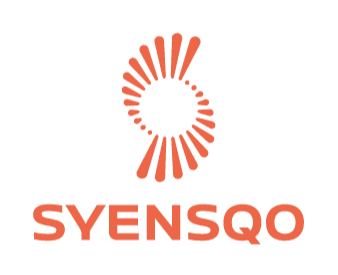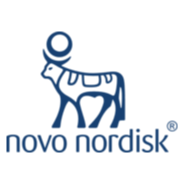Agenda Day 1
7:30 am - 9:00 am
Registration & Coffee
8:35 am - 8:45 am
Chairperson's Opening Address
8:45 am - 9:15 am
Panel Discussion: Practical Data Challenges: Making Lab Data Searchable, Shareable & Usable
Maryam Momtaz -
Head of Specialty Polymers R&I Excellence and Transformation,
Syensqo
CK Ong - Director Data Product, GSK
Labs are drowning in data, and despite years of discussion, most remains siloed, inconsistent, or inaccessible. This panel explores real-world strategies for making lab data searchable, shareable, and ready for reuse, helping organizations unlock the value hidden in their experiments and workflows.
Join this session to learn how peers are tackling fragmented and siloed lab data to enable faster decision-making including:
- Discover approaches to standardise and harmonise data across multiple instruments, systems, and sites.
- Understand practical methods to boost usability and accessibility so scientists can extract actionable insights.
- Hear lessons on avoiding common pitfalls in data management and accelerating AI readiness.
9:15 am - 9:45 am
Unlocking the Value of Vendor-Agnostic Digital Labs to Reduce Silos & Drive Harmonisation
Anna Codina -
Senior Director Strategy & Business Development,
SciY
Julien Marin - SVP, Chief Operating Officer, Novalix
Digital transformation often stalls when labs are locked into vendor-specific systems that don’t talk to each other. SciY offers a vendor-agnostic platform that integrates instruments, automation hardware, and scientific data into one environment, following FAIR data principles. This approach enables organizations to reuse and preserve data, streamline workflows, and prepare their labs for AI-driven innovation — all without costly disruption.
- Tackle the challenge of vendor lock-in and discover how a neutral platform can future-proof your lab ecosystem.
- Overcome data silos and incompatible systems by harmonizing and reusing data across all instruments and workflows.
- Address the AI-readiness gap by learning how to extract maximum value from your current infrastructure with minimal disruption.
9:50 am - 10:20 am
One-To-One Business Meetings & Networking
10:25 am - 10:55 am
One-To-One Business Meetings & Networking
11:35 am - 12:05 pm
Case Study Presentation: L’Oreal R&I’s strategy on achieving FAIR microbiome data
Ahmad Khodr -
Head of Microbiology Innovation Laboratory,
L'Oreal
During this presentation we will discuss:
- FAIRifying Skin Microbiome Research: Exploring an experimental data case study for knowledge generation in skin microbiome studies.
- Addressing Microbiome Data Challenges: Understanding the complexities and heterogeneity in skin microbiome data, including large volumes, metadata standardization, and privacy concerns.
- Harmonizing Microbiome Data Generation: Highlighting the critical need to harmonize sequencing platforms, pipelines, and methods to produce FAIR skin microbiome data.
- L'Oréal's Robust Strategy: Detailing L'Oréal's proactive approach to FAIR microbiome data generation, covering robust planning, data management, internal collaboration, and quality consistency.
12:05 pm - 12:35 pm
Unleashing the Future: How Agentic AI and Smart LIMS Are Transforming Laboratory Operations
Jon Davidson -
VP Analytics,
Labvantage
Traditional Laboratory Information Management Systems (LIMS) have long served as the lab’s digital backbone, but a new wave of innovation is transforming what’s possible. We are entering an era where intelligent LIMS converge with Agentic AI to create not just automated laboratories – but autonomous, intelligent ones. These next-generation systems can interpret data in real-time, adapt dynamically, and offer actionable insights at high speed.
Join us to learn:
- What is Agentic AI and why your lab can’t afford to ignore it
- What is the application of Agentic AI
- How to leverage AI-driven actions without compromising data integrity
12:40 pm - 1:10 pm
One-To-One Business Meetings & Networking
1:10 pm - 2:00 pm
Interactive Networking Lunch
2:35 pm - 3:05 pm
Presentation: Catalysing AI-Readiness to Build Strong Foundations in Smart Labs
Erik Vernet -
Vice President - Scientific Data Registration,
Novo Nordisk
No matter your industry, laboratories will only be able to realize AI’s potential if the data and the organization is ready. This includes properly structured, validated, and contextualized data as well as building the tools, processes and skill sets to leverage it. Join Erik Vernet during this keynote to explore how to work with these concepts and leverage multi-agent frameworks to build trustworthy AI pipelines.
- What does AI-Readiness actually mean?
- How can labs apply objective quality checks, validation steps, and multi-agent cross-referencing to improve reliability?
- What does Machine Learning, Generative and Agentic AI tools look like and bring of value along the Design-Make-Test-Analyse cycle?
3:05 pm - 3:35 pm
Panel Discussion: Lab Data: The Role of Ontologies in Modern Laboratories
Birthe Nielsen -
Project Manager,
Pistoia Alliance
Matthew Walker - Associate Principal Scientist – IT/OT Lead, AstraZeneca
The Pistoia Alliance’s CMC Process Ontology project is driving pre-competitive collaboration to standardize how pharmaceutical processes are digitally represented. This panel explores how shared data definitions and ontologies can accelerate technology transfer, improve reproducibility, and foster innovation—not just in R&D, but across quality, manufacturing, and compliance functions.
- Reduce Operational Silos: Learn how a common ontology can align multiple departments, creating consistent data definitions across labs, manufacturing, and quality functions.
- Facilitate Technology Transfer: Understand how standardization enables faster, more reliable digital transfers between sites and external partners.
- Support Compliance & Analytics: See how structured process data can improve traceability, reporting, and preparation for advanced analytics or AI applications.
In this quick-fire round of dialogues, delegates will have the opportunity to both hear and share different views on some of the most contentious topics currently facing the smart labs community. A perfect session to cover a wide range of topics in a short amount of time, join this session to better understand where you – and your peers – stand in different debates surrounding the data space.
4:15 pm - 4:45 pm
One-To-One Business Meetings & Networking
4:50 pm - 5:20 pm
Keynote Presentation: Bridging the Scientific and Human Experience in the 2026 Laboratory Ecosystem
- Optimising workflows with next-generation software and digital tools to enhance collaboration and accelerate research outcomes
- Leveraging AI, machine learning, and robotic automation to improve operational efficiency, data quality, and reproducibility
- Integrating laboratory systems and platforms for a unified, scalable, and agile environment
- Ensuring consistent quality and compliance while reducing errors and freeing scientists to focus on high-value tasks
5:20 pm - 5:50 pm
Case Study: Practical examples of how AstraZeneca are driving AI within their early-development laboratories
- Discover our strategy to structure our critical CMC data and move towards real-world AI applications that drive scientific and operational value.
- Get insight into our journey of learning by experience with practical AI case studies that exemplify the barriers we face & how we are driving impact.























